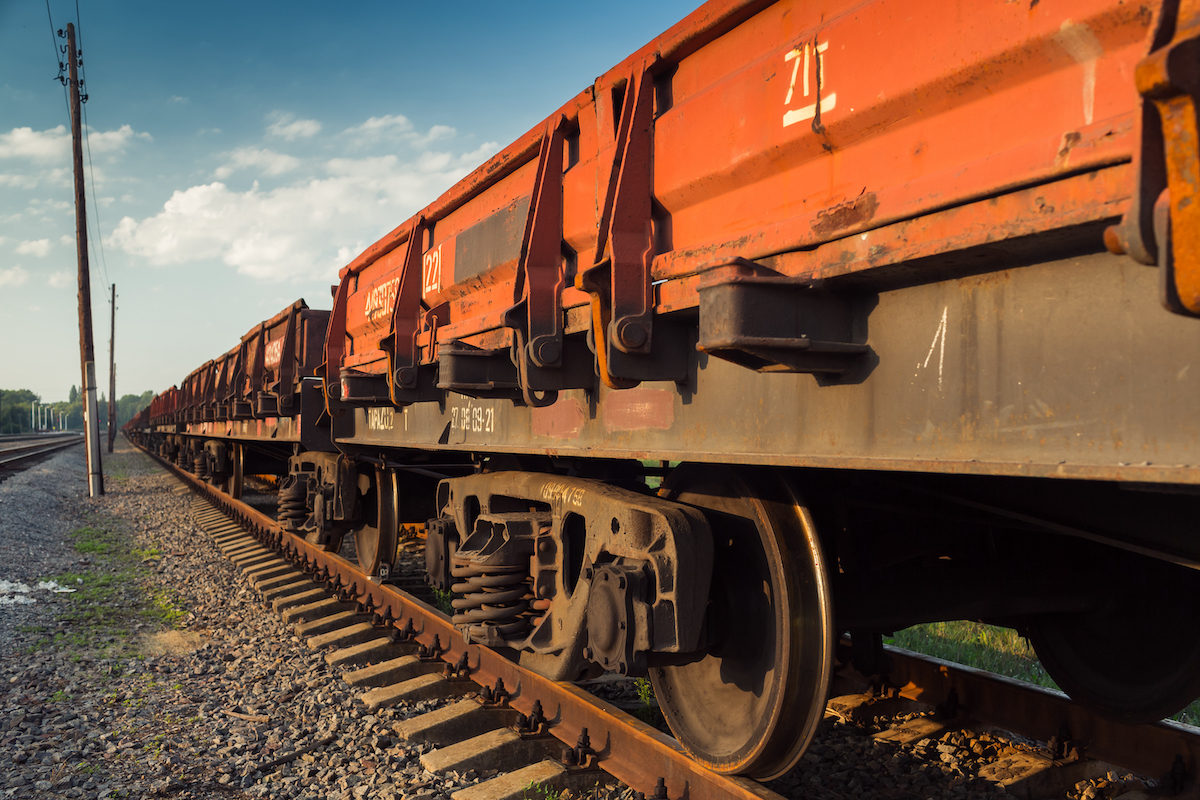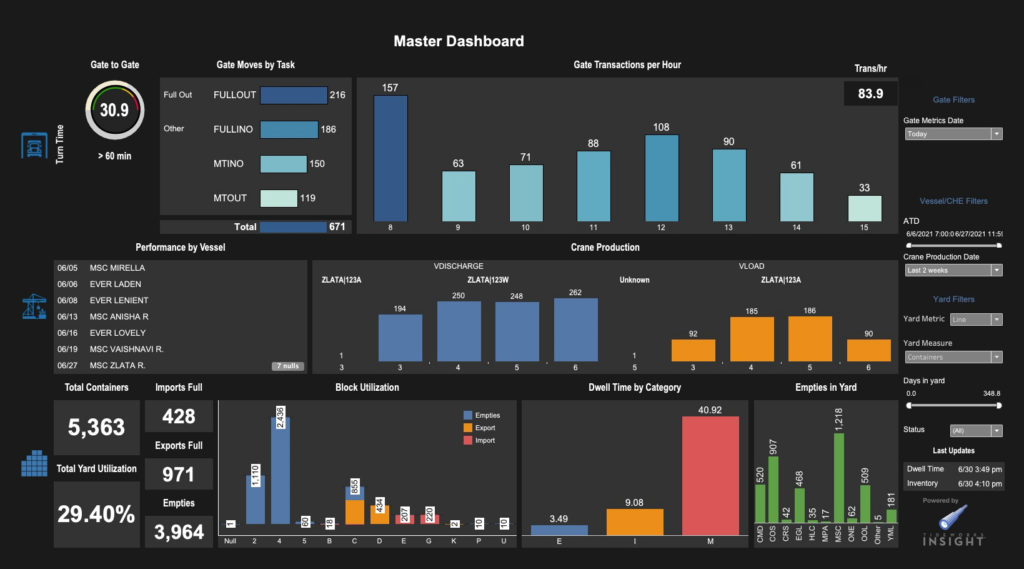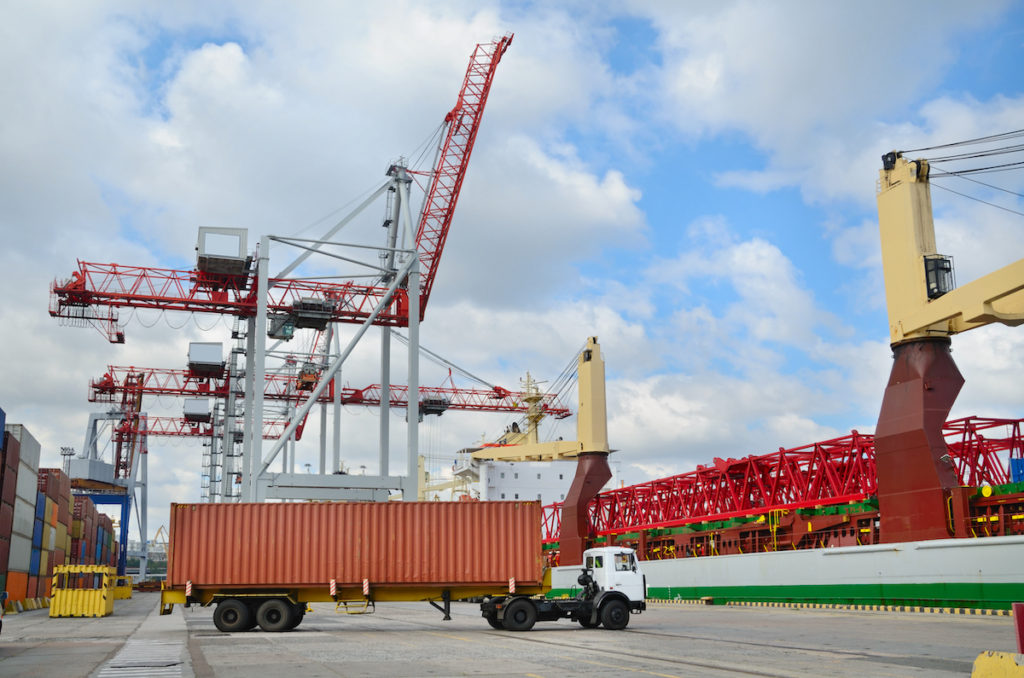
When terminals need help effectively utilizing and fine-tuning the Tideworks Terminal Operating System (TOS), they turn to our operational consulting and analysis services. Our team of professionals has many years of experience in terminal operations and an in-depth understanding of our clients’ business and the Tideworks TOS solutions.

What Brought You to Tideworks? What Has the Experience Been Like?
I left academia for a job with a consulting firm, and Tideworks was one of our clients. We did operations research for Tideworks. One particularly significant project required us to verify that vessel stowage plans for hazardous goods were compliant with the International Maritime Dangerous Goods Code.
When we completed that project, I took an open position in the Traffic Control group, which was a great position for me. Traffic Control is our dispatching application; it assigns work to the terminal’s equipment and is where operations research gets applied. I get to see my work’s impact almost immediately.
What is Operations Research?
Operations Research is what you get when math and decision-making come together. Math, or more specifically, mathematical analysis, is applied to a problem or process to make it faster or improve decision making. This is what we do for terminals around the world.
What Are the Steps Involved in the Research Process?
The steps involved in the research and analysis process is a fairly standardized four-step system:
- Discovery phase
- Requirements gathering and analysis
- System tune-ups
- Post-implementation monitoring.
Site Assessment
We begin with a site assessment or what we often call the Discovery Phase. During this phase, I’m not necessarily looking for what is wrong with a site. Mostly, I’m looking for answers to questions like, ‘What is the site like’ and ‘How do you guys work.’
No two container terminals operate the same way. If Tideworks wants to best support their business processes with software, we have to know how they work, and then we have to verify that our software can support those processes.
Read on: Develop a Deeper Understanding of Your Business Through Our Business Process Analysis
Requirements Gathering and Analysis
Following a site assessment, our team will move on to the requirements gathering and analysis phase. Our clients are using either our main applications or Tideworks Insight. The requirements refer to the data we need to see from the clients. Our team measures metrics and KPIs. A metric is anything data can measure, while a KPI is something we can measure and has a threshold to tell us whether or not a system is healthy.
The requirements gathering and analysis phase is when our team performs operational consulting most directly. Our team uses data to help clients understand the differences between a custom solution and a solution that would require them to change their system to align with our applications. They can see the cost and benefits of making a change that might be better for them and us.
For example, we might look at the dwell time of boxes coming into a yard through Tideworks Insight, our data management platform. This analysis helps clients learn to stack in a way that allows for the containers departing soon to be placed at the top of the stack. That type of analysis really affects the bottom line.
System Tune-Ups
System tune-ups or presenting the data comes next. Clients possessing their own data team will grab the data from databases. Others with little to no data staff will need us to present the data via dashboards using third-party tools like Tableau.
Read On: How to Build a Data Team That Drives Productivity and Results
After those three phases, our team will continue to monitor. We call this post-implementation monitoring. Whether they use our main applications (Mainsail 10, IPRO) or Tideworks Insight, our clients often come back to us for more custom work. If they are using Tideworks Insight, any changes, such as additional KPIs, can be implemented quickly. However, if they are using our main applications, we may need to implement a software development lifecycle to update the app.
What Project Are You Most Proud of and Why?
One of our most recent successes was on a project to assess the viability of UTR pooling. UTRs are terminal trucks. A pack or gang of approximately six terminal trucks is usually assigned to one ship-to-shore crane. There might be 3-5 cranes working with one vessel, meaning there could be anywhere from 18-30 UTRs for one vessel.
UTRs are dynamic things. During the loading or unloading process, there may be times when one crane is using more of its UTRs, and another crane is using fewer. But as we noted, the UTRs only work with one crane, no matter what. Tideworks developed UTR pooling to address this issue.
UTR pooling pools the UTRs together and sends them where they are most needed instead of assigning them to one crane. If a ship-to-shore crane needs more UTRs, it has them assigned out of the pool. We delivered this solution to one of our biggest terminals in Panama, and they love it. They have been using it for a little over a year. The results have been very successful. When they use UTR pooling, they need about 10 percent fewer UTRs, saving time and other resources. Good optimization is usually around 5 percent, but in this case, we achieved 10 percent, which is almost unheard of.
How Would a Terminal Know They Could Benefit From Operational Consulting Services? What Are Key Indicators to Look For?
A terminal general manager (GM) should ask themselves one question: “what is the thing at your terminal you want to improve?” One thing some terminal GMs might want to improve is gate velocity. They want to move more containers through the gate, period. They may already have the data on how long each step in their truck turn time takes, and they conclude that it might be excessive. They might have determined the problem to be too many set-asides, and they want help reducing this. Our operational consulting team can propose solutions to fix it.
What a Terminal Should Be on the Lookout For?
Another area a terminal might be looking to learn more about or improve would be UTR productivity. A terminal GM might think it is taking too long for UTRs to get to the yard and back to the crane. They could come to us, and we can measure that for them. We have a data visualization program called Terminal View, where they could watch the UTRs movement. Terminal View will help the terminal GM find any problems, and together we can determine the best solution.
Whether it’s uncovering a problem or finding the best solution, Tideworks’ operational consulting and analysis team help clients meet their financial and operational goals. This is a team that makes a big impact. Thank you to Bill Johnson for taking the time to share his insights and demonstrate the power of operational consulting and analysis.
And for more information about how our operational consulting team can help your terminal, contact us directly today.




